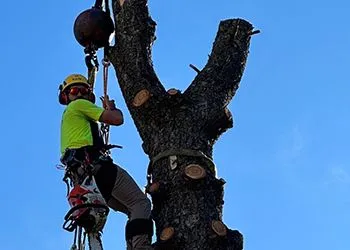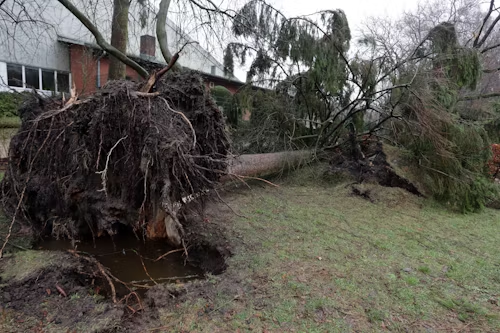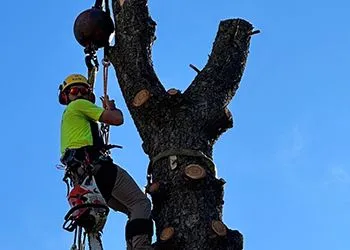4 Indications that a Tree Is Dying and You Should Schedule an Arborist Evaluation

A dying tree isn’t just an eyesore—it can also become a serious safety hazard if it falls or sheds large limbs. Catching the warning signs early gives you a chance to act before the situation worsens. At Abundant Tree Care Services, our local arborists can identify dying trees and safely remove them as necessary. If you notice any of the following issues, it’s time to contact a certified arborist for a professional evaluation.
Sparse or Discolored Leaves
When a tree begins to decline, its foliage often shows signs of distress first. You may see thinning leaves, discolored patches, or leaves that drop earlier than expected. In deciduous trees, this could mean the tree is not getting enough water or nutrients due to root damage or internal decay. In evergreen trees, browning needles or branches that are bare on one side warrant professional assessment. Leaf health is one of the best indicators of overall tree vitality.
Trunk Has Cracks/Splits
Visible cracks in the trunk are often a sign of internal weakness. Deep vertical splits or bark that is peeling away can indicate decay within the interior of the tree. These structural weaknesses can make the tree more vulnerable to breaking or falling, especially during storms or high winds. If you spot significant cracks or areas where the bark is missing, it’s a sign that the tree should be evaluated without delay.
Dead/Hanging Branches
Large dead branches, especially those located high in the canopy, are common indications of a dying tree. These limbs become brittle and can snap unexpectedly, posing a danger to people and property below. Dead branches may also point to deeper problems in the tree’s vascular system. An arborist can determine whether the tree is still salvageable or if removal is the safest option.
Leaning with Exposed Roots
A tree that suddenly begins to lean or has visible, exposed roots may be experiencing root failure. This can happen due to disease, soil erosion, or storm damage. When roots can no longer anchor the tree properly, it becomes unstable and dangerous. A leaning tree should always be taken seriously and assessed by a professional to determine the best course of action.
Tree Removal in De Soto, IL
For expert
arborist services in De Soto, Carbondale, and Southern Illinois, contact Abundant Tree Care Services at
618-227-2881. Feel free to give us a call to ask for an estimate!




